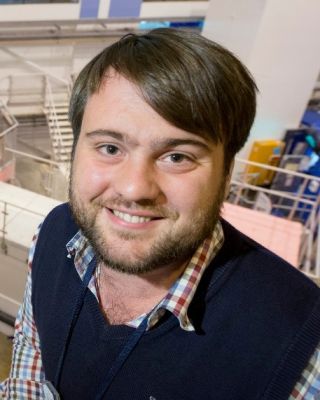Roger Johnson is a lecturer in condensed matter physics at University College London, having recently moved from the University of Oxford where he held a Royal Society University Research Fellowship in the Department of Physics. Roger works in the area of quantum materials and physical crystallography. Crystal and magnetic structure solutions are obtained by multiple diffraction-based methods, and combined with symmetry analysis by group and representation theory, he determines structure-property relationships in inorganic oxides, halides, and hybrid organic-inorganic materials.
Lecture 2: Roger Johnson
Charge density analysis and the fundamentals
of magnetic super-exchange
Mail: roger.johnson@ucl.ac.uk
The vast majority of studies into quantum magnets - materials in which the quantization of spin cannot be ignored - have been based on fully inorganic material systems. However, recent work on hybrid organic-inorganic quantum magnets (HQMs) has provided examples of model low-dimensional magnetic lattices, unconventional excitations and functional properties such as multiferroicity. Importantly, HQMs have a versatile 'building-block' structural flexibility, in which the properties of each molecular unit are to some extent preserved in the whole. We aim to use charge-density analysis in combination with a range of well established methods to significantly further our understanding and ability to take advantage of fundamental magnetic interactions in HQMs.
First, I will introduce selected concepts and results from our studies of quantum magnetism in inorganic perovskites. I will then present our more recent work on the magnetic and electronic structures of dimethylammonium copper formate [(CH3)2NH2]Cu(HCOO)3, a model compound that belongs to a wide class of perovskite HQMs. Determination of the electron charge density distribution and orbital occupancy by high-resolution X-ray diffraction enabled us to elucidate the mechanism of magnetic exchange mediated by formate anions and the applicability of foundational theories of the purely inorganic counterparts.
Finally, I will discuss the recent discovery of a pressure-induced orbital reordering phase transition in [(CH3)2NH2]Cu(HCOO)3, primarily driven by structural instabilities unique to HQMs. This transition presents an interesting opportunity for future charge-density studies under extreme conditions, that may establish the basis for undiscovered orbital reorientation phenomena in this broad family of materials.


